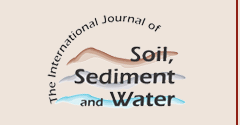Abstract
Soil contamination with dangerous, toxic chemicals remains one of the most difficult problems in this era. Health risk assessments often do not consider the amount of chemicals in soil that are absorbed and their disposition (kinetics). The aim of these studies was to compare the extent to which adsorption to either a sand or clay content soil affects the kinetics and manner which benzene is subsequently handled in orally or dermally exposed rats. Dermal exposure increased absorption half-lives (t1/2) by 25, 60 and 44-fold compared with oral exposure to benzene alone, or in the presence of sandy or clay soil, respectively. The elimination t1/2 following dermal versus oral exposure were increased about 2-fold in benzene alone and sandy soil groups, while in the clay soil group the increase was 13-fold. The area under the blood concentration versus time curve (AUC) of benzene in the presence of either soil was increased after oral and decreased after dermal exposure compared with exposure to benzene alone. The urinary recovery, 48 hours following dermal exposure to benzene alone, was 3-fold greater than following oral exposure. Tissue distribution after all oral exposures resulted in the highest concentrations of radioactivity in gastric contents > stomach > fat > duodenum > adrenal. The highest tissue concentrations of radioactivity after dermal exposure to benzene alone were kidney > liver > treated skin; however, after exposure in the presence of either soil the highest tissue concentrations were treated skin > kidney > liver. The results of these studies reveal that the presence of sand or clay content soil produced qualitative and quantitative differences in the disposition of benzene in the body following oral or dermal exposures. These differences will impact the risk assessment of benzene.
Recommended Citation
Abdel-Rahman, Mohamed S. Ph.D. and Turkall, Rita M. Ph.D.
(2010)
"Determination of Oral or Dermal Benzene Exposure from Contaminated Soils,"
International Journal of Soil, Sediment and Water: Vol. 3:
Iss.
1, Article 4.
Available at:
https://scholarworks.umass.edu/intljssw/vol3/iss1/4
